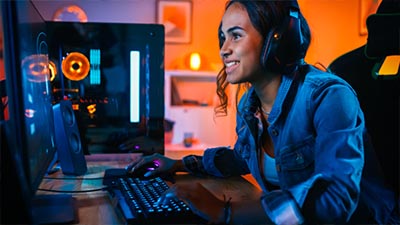Pop quiz: When you want to learn how to do something, where’s the first place you look? I’d bet for most people reading this, it’s a video on YouTube. That’s because video is an extremely effective way to learn—and the reason most digital learning is now video-based. According to surveys of teachers using digital curriculum, 90% spend most of their digital learning time using video.

Unless you’re a fan of constant buffering, stuttering and restarts of your video stream, you know that video-based digital learning demands high-performance Wi-Fi. It’s why a big portion of schools’ available eRate funding has gone to beef up classroom networks. Even if teachers aren’t using video heavily just yet, districts believe, they soon will be. Analysts expect more than half of
If you’ve been taking a wait-and-see approach on digital learning—and on updating your classroom Wi-Fi to support it—it’s time to take the next step. Because if you think HD video-based curriculum places heavy demands on classroom networks, just wait for what’s coming next: virtual reality.
No longer science fiction
A few years ago, the notion of VR curriculum in schools was one of those ideas that sounded great but no one was actually doing. Well, fast forward to the present, and districts are most definitely investing in VR.
The biggest names in tech and education, like Scholastic, Google and Microsoft, now offer a huge and growing portfolio of VR curriculum to fuel digital learning. Dozens of other smaller companies are releasing their own VR-based education every year. Visit any K-12 education technology conference these days, and you’ll find a third of the floor space devoted to VR curriculum.
So, VR digital learning content is definitely available now. And, thanks to eRate, the funding is often available too. The biggest remaining barrier to widespread use of VR in the classroom: aging Wi-Fi networks that just can’t handle the demands of the medium.
Growing requirements for classroom Wi-Fi
Many classroom networks struggle to deliver plain old HD video without delays and dropped streams. Combine immersive, 360-degree video experiences with the additional layer of data transmission needed for real-time interactivity, the demands on your Wi-Fi get even greater. Multiply that by many students using VR at once—plus the teacher, who tracks all students’ headset views on a tablet to guide them through the content—and the problem gets even worse.
Issues caused by networks with poor latency or insufficient capacity (stuttering, buffering, video stream dropouts) can be extremely disruptive for students and teachers using VR. In an immersive VR digital learning experience, delays between a students’ movements and what they see onscreen can even cause nausea and headaches. In the worst cases, inadequate Wi-Fi networks can render the VR digital learning experience completely unusable—and your curriculum investment a waste.
Preparing for the VR future
Fortunately, it’s not hard to get your classroom networks ready for VR-based digital learning. You need Wi-Fi infrastructure that delivers two key things:
- Low latency, so there’s no noticeable delay between when the VR system transmits data (like a student’s position and movement) and the digital VR experience responds
- High capacity, so the connection between VR headsets and the Wi-Fi network is fast enough that video streams don’t pause, drop or have to constantly buffer
Ruckus is helping primary schools around the world meet and exceed the demands of VR digital learning in both these areas. Our patented Wi-Fi innovations deliver the industry’s highest-performing Wi-Fi access points (APs)—the biggest reason why schools that test us against the competition almost always choose Ruckus.
In independent testing from Divergent Dynamics, Ruckus APs outperformed four other major wireless vendors in video performance, and it wasn’t close. When each vendor’s AP was subjected to a Wi-Fi video “stress test,” Ruckus was the only one that could stream video to 60 client devices simultaneously, with zero stalls in video streams even when the network was also transmitting other data traffic at the same time.
If you think about how VR-based digital learning works—streaming immersive HD video to multiple students simultaneously, while transmitting positional and other data in the background—that’s exactly the kind of performance you need. Ruckus APs also use our SmartCast technology, which automatically prioritizes latency-sensitive media traffic to make sure students get a smooth, uninterrupted digital learning experience.
Get started
VR opens the door to a world of immersive digital learning experiences for your students, whether exploring the solar system or the Grand Canyon or the Los Angeles Philharmonic. And the technology, content and eRate funding are all available right now. Jut make sure you get the most from your digital learning investment with classroom Wi-Fi that can truly take your students wherever they want to go.














